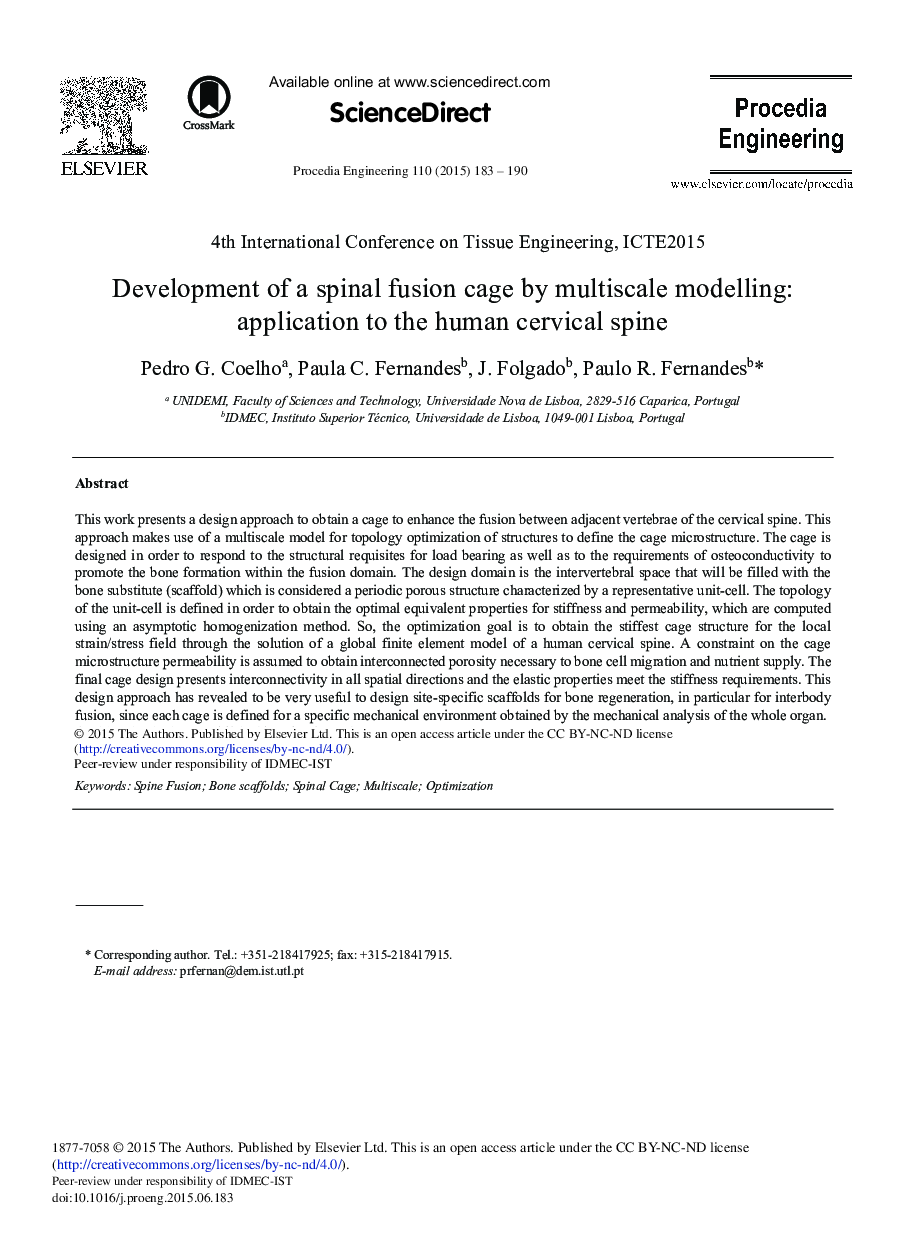| کد مقاله | کد نشریه | سال انتشار | مقاله انگلیسی | نسخه تمام متن |
|---|---|---|---|---|
| 856279 | 1470716 | 2015 | 8 صفحه PDF | دانلود رایگان |
This work presents a design approach to obtain a cage to enhance the fusion between adjacent vertebrae of the cervical spine. This approach makes use of a multiscale model for topology optimization of structures to define the cage microstructure. The cage is designed in order to respond to the structural requisites for load bearing as well as to the requirements of osteoconductivity to promote the bone formation within the fusion domain. The design domain is the intervertebral space that will be filled with the bone substitute (scaffold) which is considered a periodic porous structure characterized by a representative unit-cell. The topology of the unit-cell is defined in order to obtain the optimal equivalent properties for stiffness and permeability, which are computed using an asymptotic homogenization method. So, the optimization goal is to obtain the stiffest cage structure for the local strain/stress field through the solution of a global finite element model of a human cervical spine. A constraint on the cage microstructure permeability is assumed to obtain interconnected porosity necessary to bone cell migration and nutrient supply. The final cage design presents interconnectivity in all spatial directions and the elastic properties meet the stiffness requirements. This design approach has revealed to be very useful to design site-specific scaffolds for bone regeneration, in particular for interbody fusion, since each cage is defined for a specific mechanical environment obtained by the mechanical analysis of the whole organ.
Journal: Procedia Engineering - Volume 110, 2015, Pages 183-190
